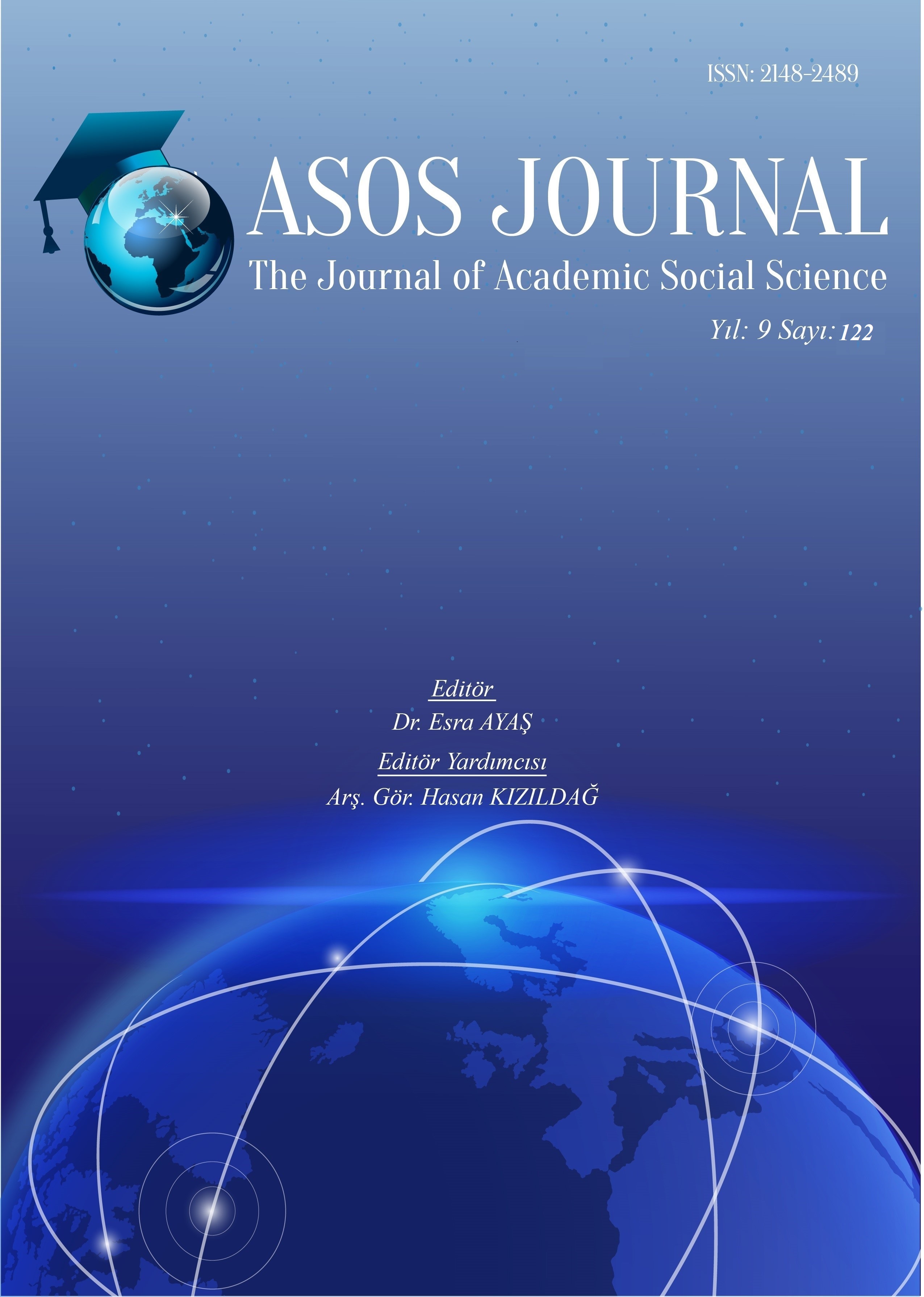Author :
Abstract
Arel-Ezgi nazariyesi, zaman zaman çeşitli yönlerden eleştirilere maruz kalsa da yaklaşık bir asırdır Türk makam müziği nazariyesinde en önemli referanslardan kabul edilmektedir. Bu nazariye esaslarına göre sürdürülen öğrenim ve aktarım süreçlerinde karşılaşılan, başta ses sistemindeki aksaklıklar ve çelişkiler ile makamların oluşumu ve sınıflandırılması konularındaki eksik, sınırlayıcı ve geleneksel icrâ ile çelişen bazı noktalar, Arel-Ezgi öncesi dönemde bestelenmiş eserler ile Arel-Ezgi nazariyesinin detaylı bir şekilde karşılaştırılması gerekliliğini ortaya çıkarmıştır. Bu sebeple karşılaştırmalı bir çalışma fikri oluşmuş; araştırmanın hacim yönünden sınırlandırılması gerekliliği de dikkate alınarak bir örneklem grubu oluşturulması planlanmış ve Türk müziği derslerinde ilk öğretilen konulardan olan “basit makamlar” araştırmaya konu edilmiştir. Araştırmada, söz konusu “basit makamlara” ait nazari bilgiler ile bu makamlarda-mümkün olduğunca Arel-Ezgi öncesinde-bestelenmiş örnek eserlerin benzerliklerinin ölçülmesi; bu sayede nazari bilgilerin doğruluğunun test edilip varsa eksiklerin tamamlanması veya geleneksel kullanım ile uyuşmayan bilgilerin düzenlenmesi amaçlanmıştır. Bu amaç doğrultusunda Arel-Ezgi’den günümüze ulaşan ve onların nazariyesini temel alan yazılı kaynaklarda yer alan “basit makamlar” ile ilgili bilgiler derlenmiş ve bu bilgilerle karşılaştırılmak üzere Arel-Ezgi sisteminde basit makam olarak nitelenen 13 makamdan Kürdî, Rast, Uşşak, Hüseynî, Nevâ, Hicaz, Hümâyûn, Uzzâl, Zirgüle, Karcığar ve Sûzinak olmak üzere 11’inde ve şarkı formunda bestelenmiş toplam 230 örnek eser incelenmiştir. Örnek eserler iki farklı yöntemle analiz edilmiş olup öncelikle geleneksel yöntemle, ölçü ölçü kalışlar incelenmiş; ardından bilgisayar ortamında eser notaları tekrar yazılıp MIDI (Musical Instrument Digital Interface) formatına dönüştürülmüş ve MIDI analiz programı yardımıyla analiz edilmiştir. İki farklı yöntem ile elde edilen bulgular beraber yorumlanmış ve önemli sonuçlara ulaşılmıştır. İncelenen makamlardan özellikle Kürdî ve Hicaz ailesi makamları olarak ifade edilen makamlarda önemli farklılıklar tespit edilmiştir.
Keywords
Abstract
Although Arel-Ezgi theory has been subject to criticism from time to time, it has been accepted as one of the most important references in Turkish maqam music theory. Some points that we encounter in our learning and teaching processes according to the principles of this theory, especially the deficiencies and contradictions in the tone system, the incomplete, restrictive and contradictory with the traditional execution, suggest that the Arel-Ezgi theory should be compared in detail. For this reason, a comparative study idea has been formed and considering the necessity of limiting the study in terms of volume, it was planned to form a sample group and Arel-Ezgi's simple maqams, which is one of the first taught subjects in Turkish music education, were included in this research. In this research, the similarities of the theoretical information about the “simple maqams” and the sample works composed in these maqams, as far as possible before Arel-Ezgi theory, are examined. In this way, it is aimed to test the accuracy of the theoretical information and to complete the deficiencies, if any, or to regulate the information that does not comply with the traditional performing. To this end, literature on “simple maqams” in the sources that refer to the Arel-Ezgi teory were compiled and a total of 230 pieces of works composed as songs in twelve of the thirteen maqams, which Arel-Ezgi describe as simple maqams, were examined. The eleven maqams are Kürdî, Rast, Uşşak, Hüseynî, Nevâ, Hicaz, Hümâyûn, Uzzâl, Zirgüle, Karcığar and Sûzinak. Sample works were analyzed with two different methods, and all measurements were examined with the traditional method first; Then, the musical notes were rewritten in the computer and converted into MIDI (Musical Instrument Digital Interface) format and analyzed with the help of MIDI analysis program. The findings obtained by two different methods were interpreted together and important result were obtained. Among the maqams examined, significant differences were determined, especially in the Kürdî and Hicaz family makams.
Keywords
- Arel, H. S. (1993). Türk Musikisi Nazariyatı Dersleri. (Yay. Haz: Akdoğu, Onur). Kültür Bakanlığı Yayınları.
- Aydemir, M. (2014). Türk Müziği Makam Rehberi. Pan Yayıncılık.
- Balcı, A. (Ed.) (2013). Sosyal Bilimlerde Araştırma: Yöntem, Teknik ve İlkele. TDFO Yayıncılık
- Başara, E. (2012). Geleneksel Türk Sanat Müziğindeki Bazı Mürekkep Makamlarda Orta Üçlü Aralığın Güçlü Perdeleri Belirleyiciliği Üzerine Bir İnceleme. Cumhuriyet Üniversitesi Sosyal Bilimler Dergisi. Cilt 36, 1, 71-78.
- Can, C. (2002). Geleneksel Türk Sanat Müziğinde Arel-Ezgi-Uzdilek Ses Sistemi ve Uygulamada Kullanılmayan Bazı Perdeler. Gazi Eğitim Fakültesi Dergisi. Cilt 22, 1, 175-181.
- Çakar, Ş. Ş. (2004). Türk Müziği Teorisi ve Makamlar. Milli Eğitim Bakanlığı Yayınları.
- Gerçek, İ. H., & Haşhaş, S. (2009). Türk Müziğinde Basit Makamlar ve Bu Makamların Bağlama Sazında İcrası. Bakanlar Medya.
- İrden, S. (2015). Bileşik Makam Bûselik. Rast Müzikoloji Dergisi. Cilt III, 2, 813-827.
- Kutluğ, Y. F. (2000). Türk Mûsikîsinde Makamlar. Yapı Kredi Yayınları.
- Özek, E. (2014). 20. Yüzyıl Türk Müziği İcrasında Perde Anlayışı. Ayhan Matbaası.
- Özgür Ü., & Aydoğan, S. (2015). Gelenekten Geleceğe Makamsal Türk Müziği, Arkadaş Yayınevi.
- Özkan, İ. H. (2013). Türk Mûsikîsi Nazariyatı ve Usûlleri. Ötüken Neşriyat A.Ş.
- Öztürk, O. M. (2014a). Makam Müziğinde Ezgi ve Makam İlişkisinin Analizi ve Yorumlanması Açısından Yeni Bir Yaklaşım: Perde Düzenleri ve Makamsal Ezgi Çekirdekleri Yayınlanmamış Doktora Tezi, İstanbul Teknik Üniversitesi Sosyal Bilimler Enstitüsü.
- Öztürk, O. M. (2014b). Makam, Avaze, Şube ve Terkib: Osmanlı Musiki Nazariyatında Pisagorcu ‘Kürelerin Uyumu/Musikisi’ Anlayışının Temsili. Rast Müzikoloji Dergisi, Cilt II, 1, 1-49
- Öztürk, O. M., Beşiroğlu, Ş. & Bayraktarkatal, M. E. (2014). Makamı anlamak: Makam nazariye tarihinde başlıca modeller. Porte Akademik, Cilt I, 10, 9-36
- Sıdal, F. (1985). Türk Mûsikîsi Nazariyatı. TRT Müzik Dairesi Yayınları.
- Tanrıöğen, A. (Ed.) (2012). Bilimsel Araştırma Yöntemleri. Anı Yayıncılık.
- Teymur, A. S. (2010). Türk Mûsikîsi. Pan Yayıncılık.
- Türkiye Radyo Televizyon Kurumu (2019) Türk Sanat Müziği Repertuvarı
- Tura, Y. (2017). Türk Mûsikîsinin Mes’eleleri. İz Yayıncılık.
- Yarman, O. (2008). Türk Makam Müziği Tarihinde Ses Sistemleri. İTÜ 2007-2008 Güz Dönemi Seminerleri.
- Yılmaz, Z. (1983). Türk Mûsikîsi Dersleri. Ege Matbaası.
- Zeren, A. (2003). Müzik Sorunlarımız Üzerine Araştırmalar. Pan Yayıncılık.





